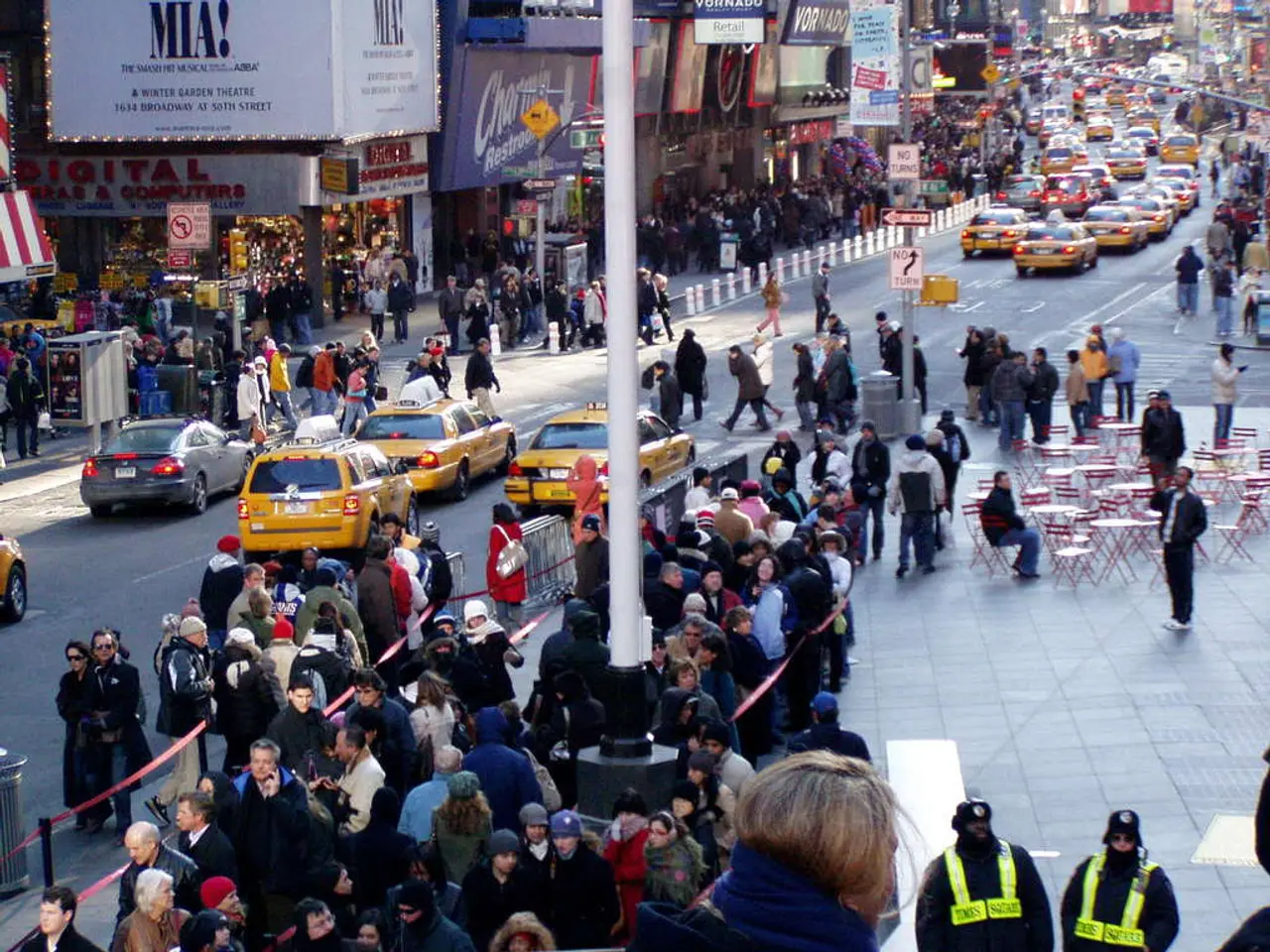Exploring Pedestrian-Friendly Infrastructure of Tokyo's Street Masterpieces
In the heart of Japan's bustling metropolis, Tokyo, a unique phenomenon is taking place on weekends, holidays, and during specific times like evenings and festivals. Known as the "Pedestrian Paradise" or "Hokōsha Tengoku" in Japanese, these events are transforming the city's streets into pedestrian-only zones, offering a glimpse into what cities could be like if most public space was not allocated to cars.
Traffic Flow Improvement
By temporarily converting streets into pedestrian-only zones, these events reduce the number of vehicles in busy urban areas, easing congestion on nearby streets. This can help redistribute traffic more evenly and decrease traffic jams around the pedestrian zones.
The events promote safer, more organized foot traffic, as seen at Shibuya Crossing, where up to 3,000 people cross simultaneously in an orderly manner without causing jams. The pedestrian-focused areas can streamline movement for both walkers and drivers by separating flows.
Encouraging walking as a mode of transport during these events helps reduce short-distance vehicle trips, which are a substantial part of urban congestion.
Environmental Sustainability
Reducing vehicular traffic during "Pedestrian Paradise" events lowers emissions of greenhouse gases and air pollutants, contributing to improved air quality in densely populated urban centers like Tokyo.
Promoting walking and possibly cycling during such events supports a shift towards sustainable transportation modes, diminishing reliance on fossil fuel-powered vehicles.
These events raise public awareness about the benefits of car-free zones and encourage residents and policymakers to consider more permanent pedestrian-friendly urban designs.
A Legacy Born from Adversity
Tokyo, largely rebuilt in a modern way after two major catastrophic events, the Great Kanto earthquake in 1923 and the fire bombings of WW2 in 1945, has a dense inner city with a grid-like street pattern similar to American cities. In response, Tokyo invested in first-class public transport infrastructure, created pedestrian zones, and developed nearby commercial areas to reduce air and noise pollution and change road traffic from car-first to pedestrian-first.
Global Impact
The Pedestrian Paradise events have inspired similar projects in cities like Times Square in New York and a re-opened canal in Aarhus. These events have been both praised and criticised, with complaints about noise from gatherings and traffic congestion caused by illegally parked cars. However, the focus should be on creating a great pedestrian experience, with traffic concerns manageable but secondary.
Making the Pedestrian Paradise a weekly occurrence can help people realize the potential of their city and drive further change. The greater Tokyo metro area, the largest city in the world by population, has much to offer in terms of showcasing the benefits of pedestrian-friendly urban spaces.
References:
- Shibuya Crossing
- Tokyo's Pedestrian Paradise
- The Future of Cities: Car-Free Zones
- The Benefits of Car-Free Streets
Homeowners and urban dwellers in Tokyo, drawn to the city's pedestrian-only zones during "Pedestrian Paradise" events, might find themselves seeking a similar lifestyle in their own home-and-garden spaces. With improved air quality and a more organized flow of people, these areas could serve as models for sustainable home-and-garden designs that promote eco-friendly lifestyles.
As these events increasingly demonstrate the positive impacts of car-free zones, they inspire city planners worldwide to consider integrating more pedestrian-friendly home-and-garden designs in metropolitan areas, fostering a greener and more livable urban landscape.




